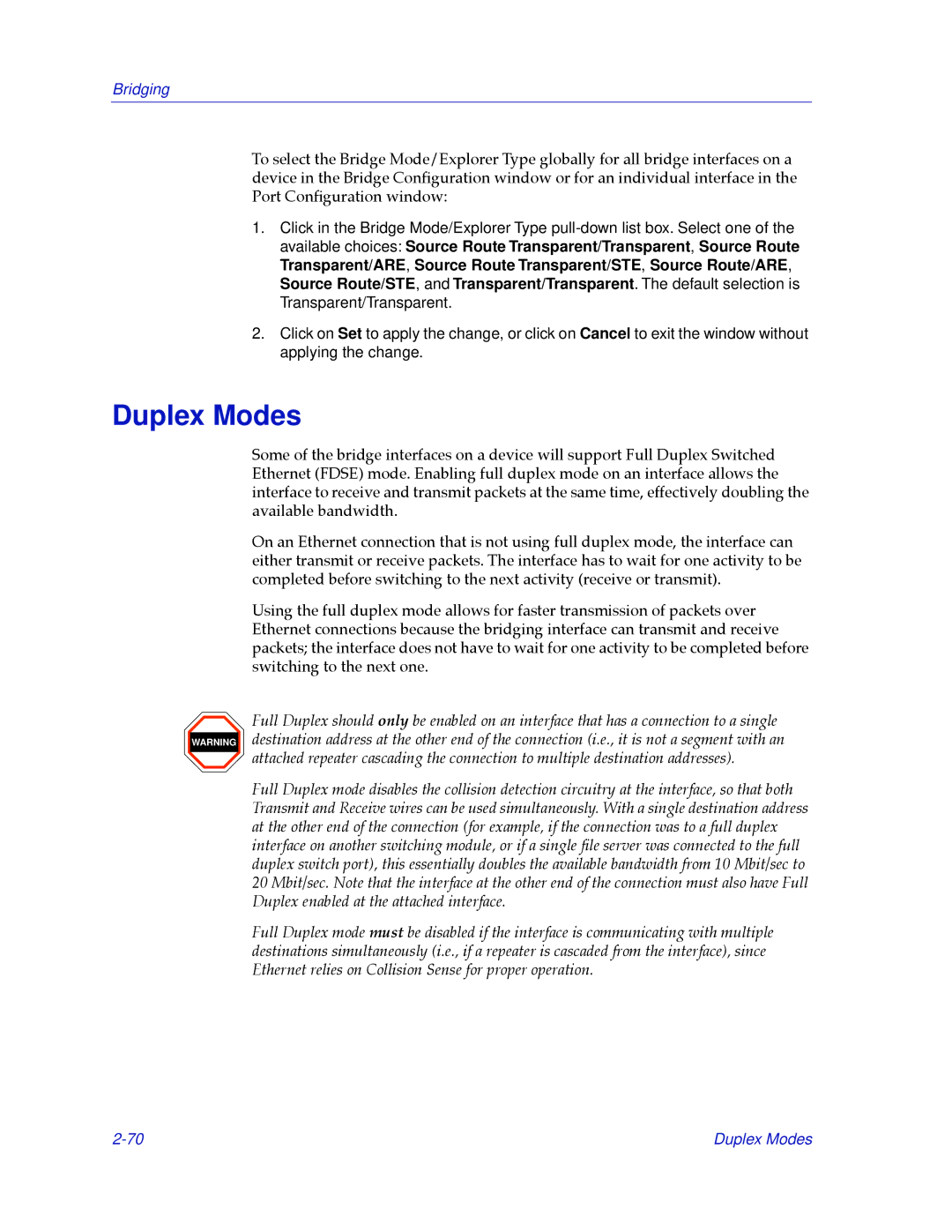
Bridging
To select the Bridge Mode/Explorer Type globally for all bridge interfaces on a device in the Bridge ConÞguration window or for an individual interface in the Port ConÞguration window:
1.Click in the Bridge Mode/Explorer Type
2.Click on Set to apply the change, or click on Cancel to exit the window without applying the change.
Duplex Modes
WARNING
Some of the bridge interfaces on a device will support Full Duplex Switched Ethernet (FDSE) mode. Enabling full duplex mode on an interface allows the interface to receive and transmit packets at the same time, effectively doubling the available bandwidth.
On an Ethernet connection that is not using full duplex mode, the interface can either transmit or receive packets. The interface has to wait for one activity to be completed before switching to the next activity (receive or transmit).
Using the full duplex mode allows for faster transmission of packets over Ethernet connections because the bridging interface can transmit and receive packets; the interface does not have to wait for one activity to be completed before switching to the next one.
Full Duplex should only be enabled on an interface that has a connection to a single destination address at the other end of the connection (i.e., it is not a segment with an attached repeater cascading the connection to multiple destination addresses).
Full Duplex mode disables the collision detection circuitry at the interface, so that both Transmit and Receive wires can be used simultaneously. With a single destination address at the other end of the connection (for example, if the connection was to a full duplex interface on another switching module, or if a single Þle server was connected to the full duplex switch port), this essentially doubles the available bandwidth from 10 Mbit/sec to 20 Mbit/sec. Note that the interface at the other end of the connection must also have Full Duplex enabled at the attached interface.
Full Duplex mode must be disabled if the interface is communicating with multiple destinations simultaneously (i.e., if a repeater is cascaded from the interface), since Ethernet relies on Collision Sense for proper operation.
Duplex Modes |
